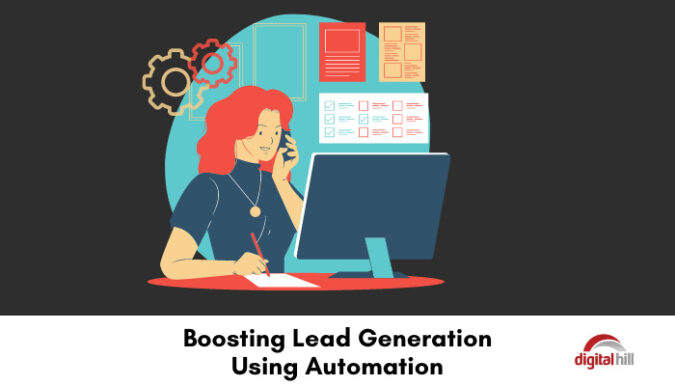Boosting Lead Generation Using Automation

Lead generation is undoubtedly the backbone of every successful business. As businesses grow, so should their lead generation strategies and channels. Traditionally, businesses relied on radio commercials, print marketing materials, and billboards to generate leads. However, the current customer journey is changing. In fact, 73% of modern customers buy experiences rather than products.
Unfortunately, only 49% of customers say they get a good customer experience. This calls for modern marketers to evaluate their customer journey, which is much easier due to the presence of marketing automation tools.
What is Lead Generation Automation?
Lead generation typically involves increasing customer interest in your products and services. It involves collecting target customer information for your sales team to convert them into returning customers. That said, automated lead generation involves using AI or machine learning-powered tools to create effective lead generation systems. AI tools can generate leads for both inbound and outbound marketing channels.
Automating lead generation allows businesses to manage customer journeys for better conversions. Lead generation can be divided into:
- Inbound lead generation – use of content marketing, SEO, and PPC
- Outbound lead generation – use of direct mail, cold calls, and email marketing
Based on this, digital marketers should be well versed with inbound and outbound lead generation tools. These include SEO tools, data collection, and customer analytics tools, list building and email marketing tools, PPC marketing tools, and more.
How to Automate Lead Generation Using Automation
Digital marketers can use automation to improve lead generation in the following ways:
1. Create dynamic landing pages
Creating dynamic pages is an excellent way of converting leads into customers quickly without capturing them first as leads. Through this, businesses can connect with interested prospects right away. Digital marketers can design landing pages targeting a specific group or customer demographic using marketing automation analytics.
Dynamic landing pages are designed to show different website content, CTAs, web design, and messages to users based on their online behavior, interests, and preferences. Personalized landing pages work best for PPC marketing campaigns than organic searches. With this, you can address specific prospect pain points by showing them exactly what they are looking for.
2. Automated email campaigns
Email campaigns are powerful lead generation tools. You can automate the following two email types:
- Trigger emails – these are event-based emails sent to customers on special periods of occasions. Over time, it has become an industry standard to send these emails. Customers also expect such emails, especially during holidays, to gather important information and deals. Trigger emails generally improve customer-business relationships.
- Drip emails – are designed to convert subscribers into leads. They are on a schedule and only send after a specific action. For example, when someone visits your landing page and subscribes. Using a lead generation CRM, businesses can send drip emails and capture leads. Marketers should send drip emails throughout the lead nurturing process to educate prospects about the business products and services.
3. Create dynamic content
Automation tools also help marketers create dynamic content, which is beneficial in lead generation. More than 50% of prospects read up to 5 pieces of content before interacting with a sales team. Similarly, over 92% of B2B customers like reading insightful and high-impact content.
That said, creating engaging content encourages potential leads to convert into returning customers. As such, you should personalize and make your content forms relatable and marketable.
4. A/B Testing
Marketing automation tools enable digital marketers to A/B test various content for effectiveness before sending it out. Through A/B testing, you can optimize content to spike engagement and conversion from your audience. This allows you to test whether your lead generation strategies are effective or not. A/B testing landing pages, emails, and other lead generation channels allow marketers to review headlines, images, and content to meet customer experiences.
Bottom Line
Leads, ROI, and conversion rates are key indicators of business success. The more leads a business generates, the better the conversion rates and return on investment. Using automation in your lead generation efforts simplifies lead targeting and conversion. Automation tools make connecting with customers and implementing effective marketing strategies easy.